Understanding bearded dragon size is crucial for their care and health. This guide provides insights into their growth stages, size variations, and factors influencing their development. Learn how age, genetics, and care practices impact their size to ensure a happy, thriving pet;
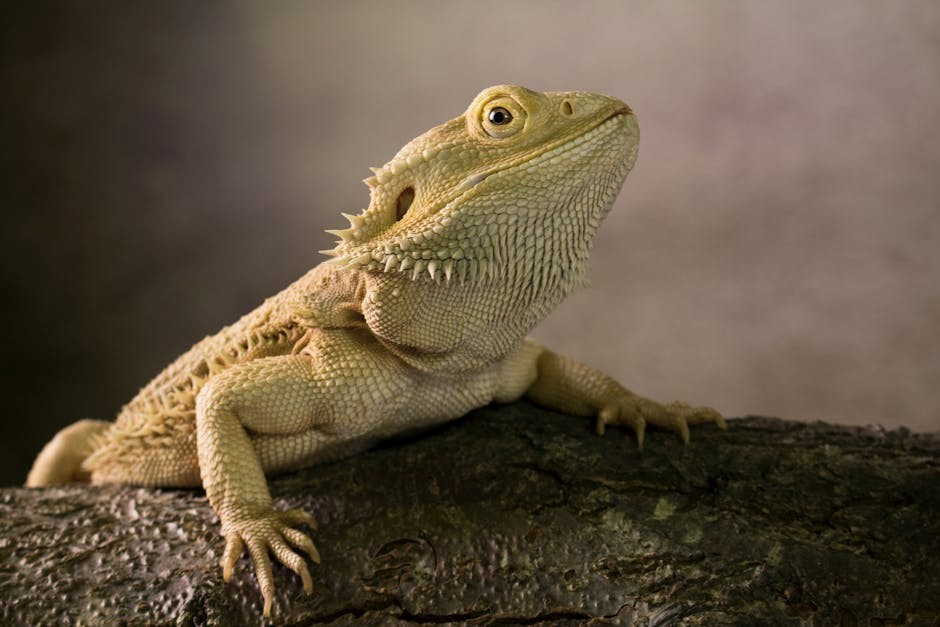
Bearded Dragon Age and Size Chart

Hatchlings are 4-7 inches, juveniles grow to 12-19 inches by 7 months, sub-adults reach 12-22 inches by 18 months, and adults typically measure 18-24 inches. Growth rates vary based on diet, genetics, and proper care practices.
Hatchlings (0-2 months)
Hatchlings are the youngest stage of bearded dragons, typically measuring between 4-7 inches in length during their first two months. At birth, they are around 3-4 inches and grow rapidly, often doubling or tripling in size within this period. Their small size makes them delicate, requiring precise care to ensure proper development. Hatchlings have a high metabolism, needing frequent feeding and optimal environmental conditions. Owners should closely monitor their growth, as any deviations from the expected size range could indicate health issues. At this stage, it’s crucial to provide a suitable habitat with appropriate temperature gradients and humidity levels to support their rapid growth and overall health. Regular weight checks are also essential to ensure they are thriving. By understanding the specific needs of hatchlings, owners can set the foundation for a healthy and strong bearded dragon as it progresses through its growth stages.
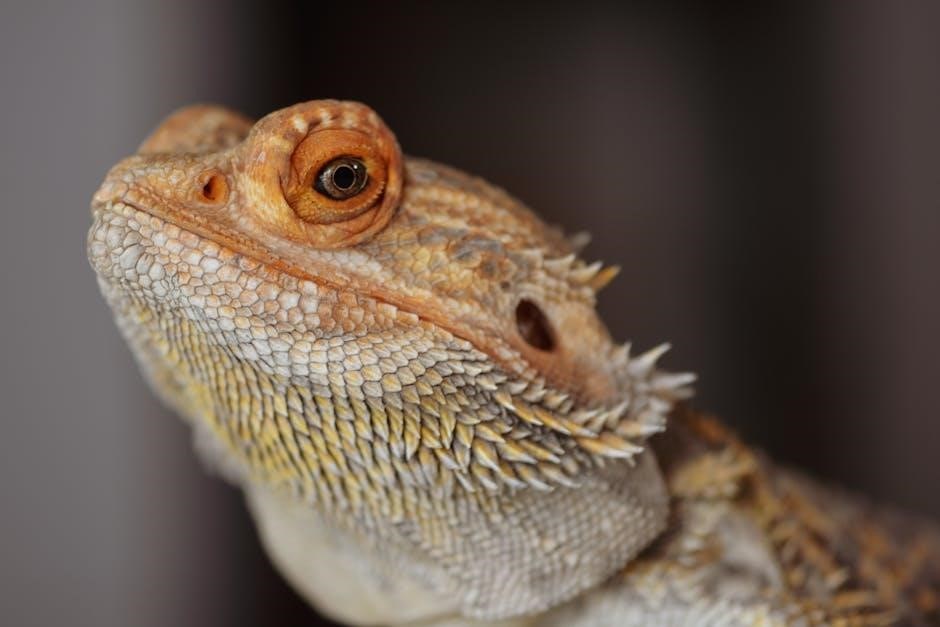
Juveniles (2-7 months)
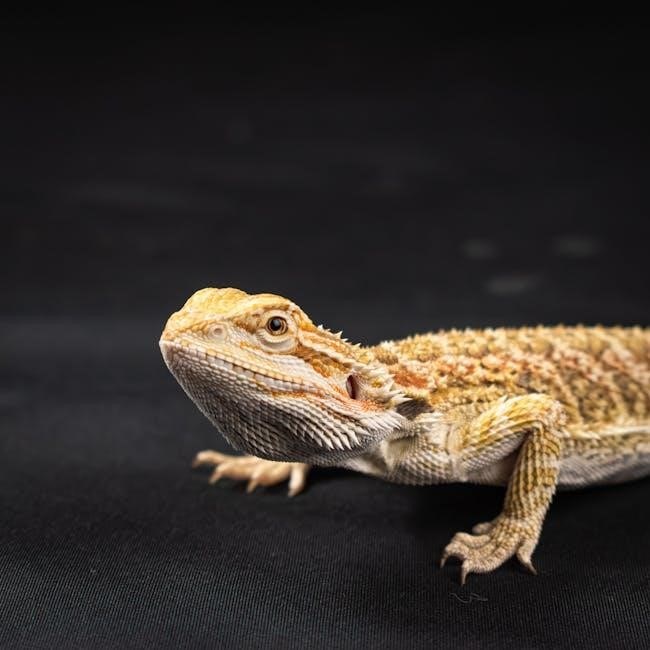
Juvenile bearded dragons, aged between 2 to 7 months, experience significant growth, increasing in length from approximately 5-9 inches at two months to 12-19 inches by seven months. This period is characterized by rapid development, with noticeable changes in both size and physical appearance. During these months, juveniles begin to develop more pronounced features, such as a broader head and more defined facial expressions. Their tails also start to show early signs of sexual differentiation, with males typically exhibiting thicker tails. Diet plays a crucial role in supporting their growth, requiring a balanced intake of proteins and vegetables. Environmental conditions, such as UVB lighting and temperature, must be carefully maintained to promote healthy bone development and prevent metabolic issues. Owners should also observe their juvenile’s appetite and activity levels, as these can indicate overall health. By providing consistent care and monitoring growth patterns, owners can help their juvenile bearded dragons transition smoothly into the next stage of development.
Sub-Adults (7-18 months)
Sub-adult bearded dragons, aged between 7 to 18 months, enter a phase of steady growth and development. During this period, they typically reach lengths of 12 to 22 inches, with males often being slightly larger than females. Their growth rate slows compared to juveniles, but they continue to develop physically and sexually. Sub-adults begin to exhibit more defined adult characteristics, such as broader heads and more robust builds, while their coloration and patterning become more vivid.
Sexual differences become more apparent during this stage, with males developing larger heads and thicker tails. Females, while slightly smaller, may start showing behaviors related to nesting instincts. Proper care remains critical, as sub-adults require a balanced diet rich in calcium and vitamins to support bone health. Environmental factors, such as UVB lighting and temperature gradients, must be maintained to prevent metabolic issues and ensure proper growth.
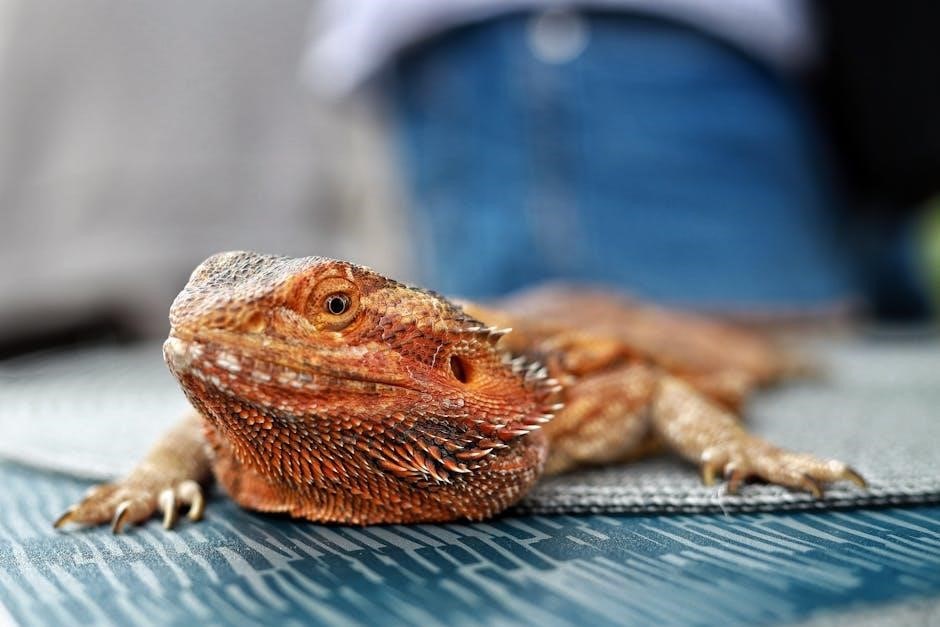
Monitoring their size and weight regularly can help identify any potential health concerns. Sub-adults are also more active, requiring ample space for movement and exercise. By providing a stimulating environment and a nutritious diet, owners can help their sub-adult bearded dragons thrive as they approach adulthood. This stage is crucial for their overall development and long-term health.
Adults (18 months and older)
Adult bearded dragons typically reach their full size between 18 and 24 inches in length, with males generally being larger than females. On average, males can grow up to 24 inches, while females usually reach around 22 inches. Their weight also stabilizes, with males averaging around 550 grams and females between 450-500 grams. At this stage, their growth slows significantly, and they achieve their final physical form.
Adults exhibit fully developed physical characteristics, such as broad heads, robust builds, and vibrant coloration. Males often display more prominent features, including thicker tails and larger heads, which are linked to their role in courtship and territorial behaviors. Females, while slightly smaller, may show signs of reproductive readiness, such as egg-related behaviors.
Proper care remains essential, as adults require a balanced diet, adequate UVB lighting, and a suitable environment to maintain their health. Regular monitoring of their size and weight ensures they remain in optimal condition. While growth may cease, their overall well-being depends on continued attention to their dietary and environmental needs. Adults are also more likely to exhibit natural behaviors, making them engaging and fascinating pets.
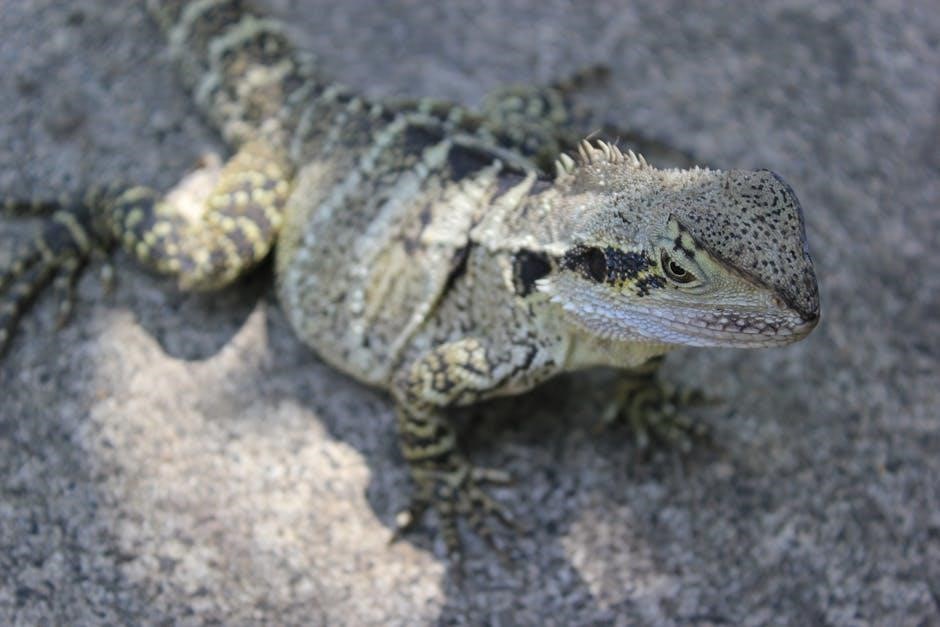
Sexual Differences in Bearded Dragon Size
Males are generally larger than females, with adults reaching up to 24 inches, while females typically grow to 22 inches. Males also weigh more, averaging 550 grams, compared to females at 450-500 grams. Physical traits like broader heads and thicker tails further distinguish males from females.
Weight Differences Between Males and Females
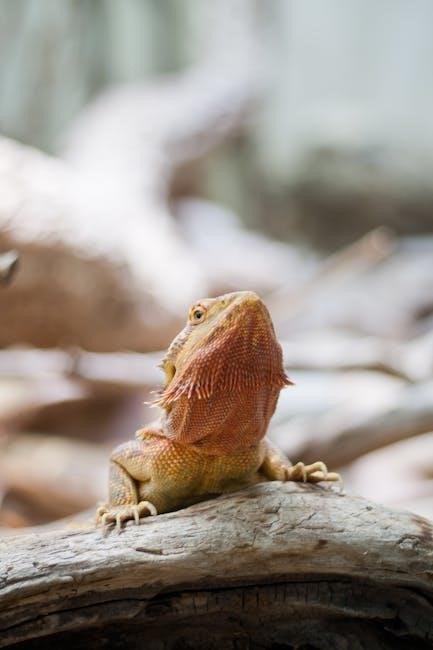
Bearded dragons exhibit notable weight differences between males and females, influenced by age, genetics, and care. Hatchlings typically weigh between 4-6 grams, with minimal gender-based variation. As they grow, males generally surpass females in weight. Juvenile males may weigh 20-50 grams by 3-4 months, while females might be slightly lighter. By the sub-adult stage (7-18 months), males often reach 300-450 grams, whereas females typically range from 250-400 grams. Adult males usually weigh between 500-550 grams, while females average 450-500 grams. These differences become more pronounced as dragons mature. Factors such as diet, exercise, and genetic predisposition can influence individual weights. While males tend to be heavier, both sexes require balanced nutrition and proper care to thrive. Monitoring weight is essential for ensuring health, as significant deviations from these ranges may indicate underlying issues. Understanding these weight differences helps owners provide tailored care for their bearded dragons, supporting optimal growth and well-being.
Physical Characteristics and Size
Bearded dragons exhibit distinct physical characteristics that correlate with their size and gender. Males typically develop broader heads, thicker tails, and more pronounced “beards” compared to females. These traits become more apparent as they mature, with adult males often displaying larger overall size. Females, while slightly smaller, may show more agility and slimmer builds; The size of a bearded dragon is influenced by factors such as genetics, diet, and care, with adults generally ranging between 18-24 inches in length. Physical characteristics like head shape and tail girth can help determine gender and assess growth stages. For example, males tend to have thicker tails at the base, while females often have narrower, more tapered tails. These differences aid in understanding their development and ensuring proper care tailored to their needs. By observing these physical traits, owners can better monitor their bearded dragon’s health and growth, ensuring they thrive at every stage of life. Regular observation of size and physical features is essential for maintaining optimal well-being.

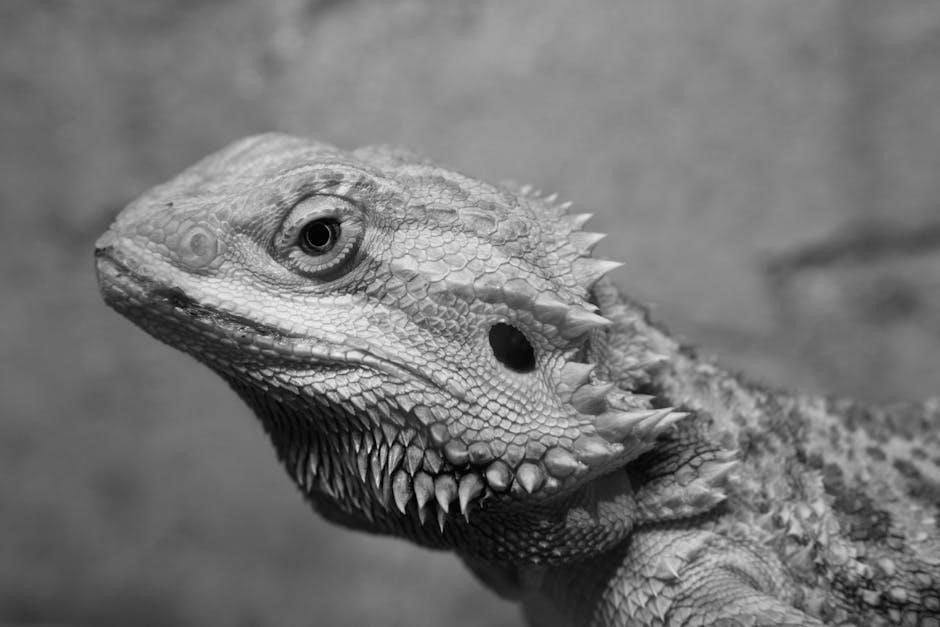
Factors Affecting Bearded Dragon Size
Several factors influence the size of bearded dragons, including genetics, nutrition, environment, and health. Genetics play a significant role, as some bloodlines naturally grow larger or smaller than others. Diet is crucial, with a balanced intake of proteins, vegetables, and supplements like calcium and vitamin D3 essential for optimal growth. Environmental factors such as lighting, temperature, and humidity also impact their development. Proper UVB lighting is vital for calcium absorption, preventing metabolic bone disease which can stunt growth. Additionally, a spacious habitat encourages physical activity, promoting healthy growth. Health issues, such as parasites or infections, can hinder growth if left untreated. Age is another key factor, as growth rates slow down once they reach maturity at around 18 months. Overall, providing a well-rounded diet, suitable environment, and regular veterinary care ensures bearded dragons reach their full size potential. These factors must be carefully managed to support their growth and overall well-being, ensuring they thrive throughout their lives.
